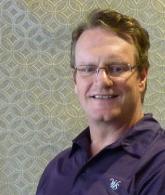Decimals, decibels, lumens—and long-term care
I spent last week fully immersed in life safety discussions in the world of healthcare. The NFPA Research Foundation hosted a healthcare summit, primarily aimed at educating the life safety technical committee on emerging trends in healthcare.
The following day, the technical committee met to consider proposals for crafting the 2015 Life Safety Code.
Wait, didn't the NFPA just ratify the 2012 code? Yes, they did.
Anyways, back on topic—the emerging trends session focused primarily on issues affecting our aging population. Passionate representatives from the Rothschild Foundation, Department of Veteran Affairs, National Center for Assisted Living, Facility Guidelines Institute, as well as private consultants, raised the awareness of aging issues that are upon our society. The insatiable desire for choice and control found within the Baby Boomer generation is becoming a reality in our hospitals, assisted living facilities and nursing homes.
Will our codes and regulations inhibit or enable providers to meet the demands of this up and coming generation of healthcare consumers? We may not have to wait long to find out. Robert Mayer of the Rothschild Foundation shared a shocking figure: 65 percent of hospital admissions today are over 65 years of age.
The questions soon followed—are our hospitals and rehab facilities equipped, both physically and emotionally, to handle the gerontological needs of this cohort? Are our lighting levels 2.5 to 5 times higher than what an average 20-year-old needs, which allows our elders to function visually in these environments? Is the prescribed 1-foot candle enough for an elder to navigate a corridor in an emergency? How much noise is detrimental to a resident’s quality of life?
The technical committee had the opportunity to tackle some of these question, along with many more, in their follow up meeting. The Pioneer Network brought another round of draft proposals to the table. They, along with other elder-centric organizations, we're instrumental in bringing changes to the 2012 Life Safety Code that focused on culture change and person-centered care.
I was proud of my fellow colleagues for continuing to challenge the status quo in the world of codes and regulations. These proposals, aimed at further enhancing the 2015 Life Safety Code, will truly enhance the quality of life for residents in long-term care environments. Seriously, how much butter does it take to create grease-laden vapors? Do walls have to define a corridor or a path of egress? If we are not limited to the number of mattresses or pieces of upholstered furniture in a sprinkled building, would a few silk plants really raise the fire hazard?
In my opinion, one of the more challenging questions of the day was, "Should life safety regulations follow home health services into the home?" As a society, we do need to be concerned for the safety of our parents and grandparents who choose to stay at home in their latter years. I'm just not convinced that we should be regulating those environments with the same healthcare lens as used for our more densely populated healthcare settings.
I was also a bit surprised at the lack of provider involvement in the process for crafting the upcoming regulations for environments for aging. We in the provider world should spend less time whining about the regulations and dedicate more of our resources into influencing the authors of those regs. I am looking in the mirror and out the window when I make that statement.
All in all, I had a wonderful experience as I witnessed the thoughtfulness and passion with which the NFPA and their technical committees approach their vital role in encouraging safe environments for healthcare. The next time you are cited for not complying with “19.3.3.2,” know that there is considerable time and energy behind all those decimals.

As Chief Development Officer, Elliott serves on the Executive Leadership Team for Vetter Health Services (www.vetterhealthservices.com). He oversees planning, design, construction, and facilities management in 33 senior living campuses in the Midwest. Elliott is currently Vice President of the SAGE Federation and serves on the AHCA Life Safety Committee. He has served as a juror for the Long-Term Living DESIGN competition.
Related Articles
Topics: Operations











